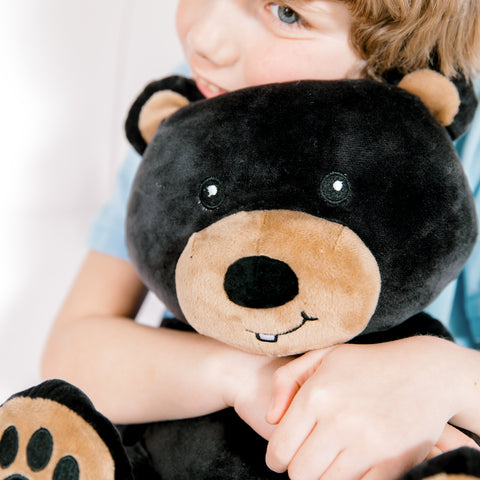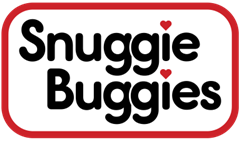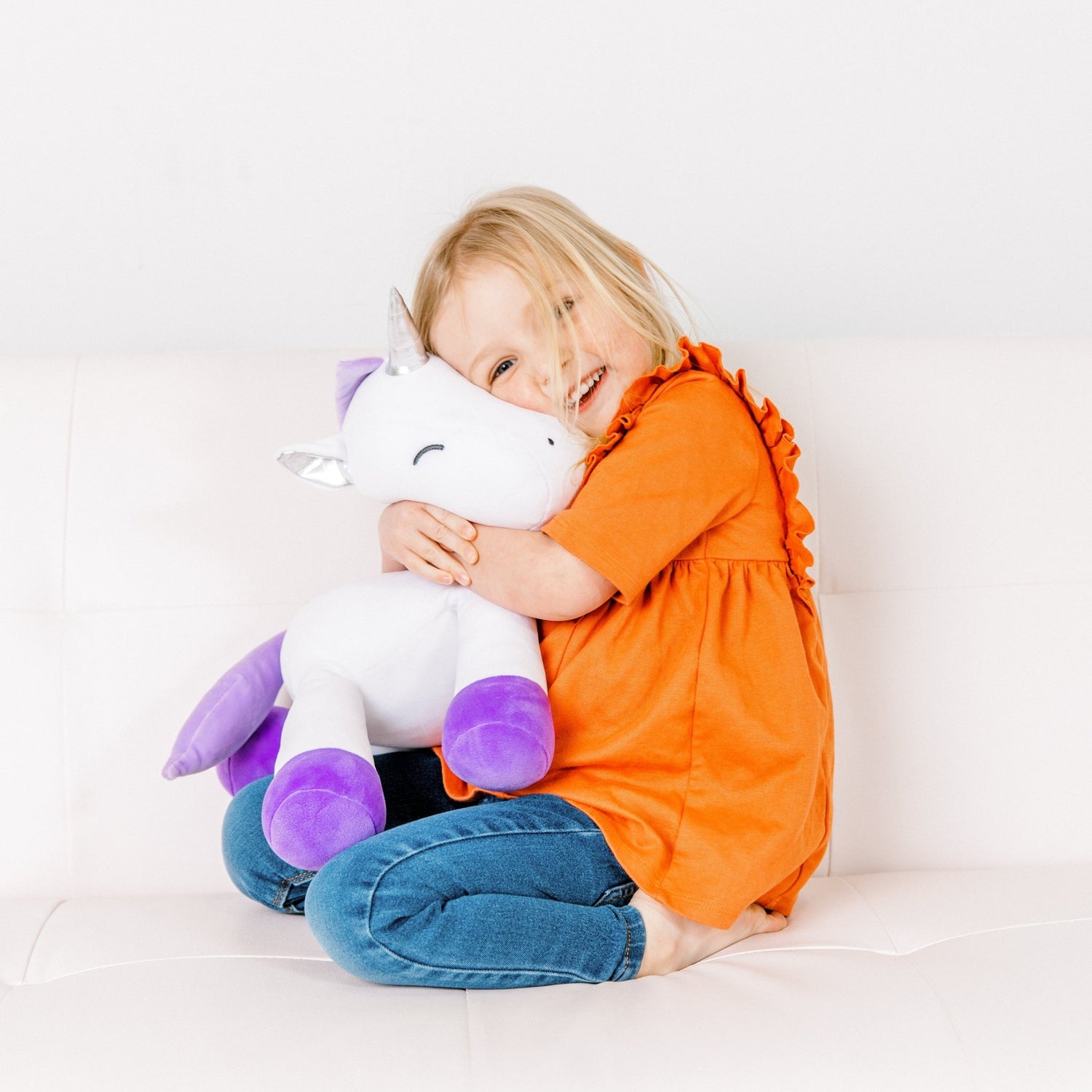
11 ideas to help name your stuffed animals
Why name your stuffed animals?
Naming your plushie is the first step in creating its identity. Naming your stuffed animal helps you develop a deeper connection with your new friend. Some products come named. The challenge is where these names fit these plushies. They are note unique and eliminate your chance for much imagination. This is why Snuggie Buggies leaves this up to you.
Naming your stuffed animal is not always easy. Research shows that the most common name for a stuffed animal is simply the type of animal-like "bear" or a similar word in another language. Taking this approach eliminates your chance for inspiration. Let's use these practical steps to help find a name for your new friend!
Stimulating creativity
The plushie's name should come from you, which will give you a feeling of ownership and build a thoughtful relationship. Using your imagination helps you develop your brain and positively affects your mental health. The best way to indulge in this fantasy is by befriending an imaginary character. This is one of the reasons the most popular plushies do not come from characters based on popular films and TV shows.
From a Name to a Character
Think of common names, for example, John. You probably know a John, right? When you think of this name, that person pops into your head. This is often paired with some emotion, based on how you relate to the individual. You might even match the characteristics of this person to the name itself. The same goes for plushies: the name you choose will give it characteristics and personality.
How do you choose the best name for your plushie?
Many stuffed animals have simple names. They range from cute and cuddly to odd and made-up. Here are some tips on how to name your stuffed animals.
-
WHAT IS THE SPECIES?
Many plushie names are tied to their species. For instance, common names are Bear, Teddy, Ted, or even Roosevelt for teddy bears. This makes them direct and easy to remember. You can also stretch your creativity and use the species as its last name with a matching first name giving it a stronger identity. Some examples could be Benny Bear, Bonny Bunny, and Otto Octopus.

Teddy the Bear
-
PLAY ON WORDS
Another way to name a stuffed animal is by playing on words. Combine or alter the name species to come up with something new. Some examples could be Cindy Coonington (raccoon), Giraffina (giraffe), or Rossafante (elephant).
-
NAME BASED ON APPEARANCE
Does your plushie have blue fur, long hair, or a short tail? These features can be used in its name. Some examples include Fluffy the Rabbit, Pokey the Porcupine, Pinchie the Lobster, Snuggly the Bear, and Snowy the Dog.

Floppy the Unicorn
-
BASE NAMES ON A THEME
What does your stuffed animal with? A Christmas shirt, Valentine's heart, or an eye patch? Its name writes itself! One famous Instagram plushie is a yellow shark named Sharka the Pineapple Shark, who holds a pineapple. You could also use lifestyle choices: from Bumpy the Backpacker to Bobby the Biker and Sammy the Swimmer.
-
POPULAR CHARACTERs
Does your plushie belong to a species with a famous character or a favorite character name? Honor them by naming your plushie after them. There are plenty of teddy bears named Winnie (Winnie-the-Pooh). Others include Monsieur Renard (Reynard the Fox), and Private Penguin (penguin from Madagascar).
-
CULTURAL and HERITAGE
Do you live in an exotic location or a city with an interesting name? Or does your cultural background provide you with fun words? Think Hawaii with a bunny named Waikiki or Ohana. Another example giving your plushie a nickname like 'the Honey Grove Bear, 'who lives in Honey Grove, Texas… and likes honey.

Hawaii Mike the Manatee
-
WORDs OR NAMEs FROM A DIFFERENT LANGUAGE
One fun way to name a plushie is to use an online translator like Google Translate your new friend's species or defining features into a different language. I always wanted to name a dog sobaka which is Russian for a dog. Or the German word for "bear" is "bär"? Think something like Bäri Bear. Hagrid's three-headed dog goes by the nickname Pluisje, meaning Fluffy in the Dutch Harry Potter books. Gato means "cat" in Spanish, Portuguese and Galician. You get the idea.

Sobaka
-
FRIENDs and FAMILY MEMBERs
It might seem funny to some to name a plushie after a loved one, but it's pretty common. These names tend to have a positive feel due to our personal connection to the people associated with those names. Nicknames in different cultures tied to names can be fun too. For instance, Thailand has some adorable names such as Freshy, Kiwi, Omsin, Oki, and Tiger! I would look at Eastern European nicknames too. For example, Alexander can be called Sasha.
-
ALLITERATION
Alliteration can be fun when you have multiple plushies that need names. Possibly famous characters like Huey, Dewey, and Louie, or Ed, Edd, and Eddy. There is a family of hamster plushies named Flinki, Flora, and Flixie. This is supposed to be fun, so go wild.
-
FAMOUS PEOPLE
If you like a specific famous person that reminds you of your plushie, why not name it after them. From "Teddy" Roosevelt to Napoleon, giving your plushie a renowned name will automatically attribute some of that stardom to your stuffed animal.

Channing Tatum The Penguin (he can dance)
-
GO OFF-BEAT
Names don't have to be logical, so have fun with it. Don't let your imagination be curbed by constructions. Your stuffed animal's name is your choice. How many Bear The Elephant or Cow the Dog have you seen.
Conclusion
When you get your new cuddly friend, this is your chance to be creative and have fun. Don't let boundaries hold you back. Besides, the only opinion that matters is yours.
Want more content from Snuggie Buggies?
5 stuffed animals that are worth money!

